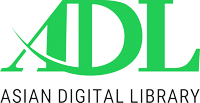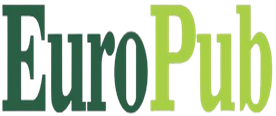Navigating fake news: Pakistan’s struggle to combat disinformation and bridging gaps for national security
DOI:
https://doi.org/10.71085/sss.04.03.327Keywords:
Fake News, Disinformation, Cybersecurity, National Security, PakistanAbstract
Fake news poses a growing threat to national security worldwide, particularly in developing democracies like Pakistan. The study attempts to analyze the cybersecurity policies of Pakistan to counter disinformation in the digital domain and evaluates their effectiveness on the basis of the existing legal framework, technology-based interventions, and public awareness campaigns. This study employed a mixed-methods approach, combining survey data from 500 respondents, expert interviews with cybersecurity professionals, and secondary analysis of policy documents and an academic literature. Result shows that fake news is very common in Pakistan, social media including Facebook and WhatsApp are the main sources of circulating fake news. Result revealed that 78.4% of participants frequently encountered fake news, but only 39.5% could reliably detect it. It was revealed through comparative analysis that Pakistan is behind India, United Kingdom and the United States in useful technologies to find online lies and in teaching digital literacy. Strengthening Pakistan’s cybersecurity framework requires investment in AI-powered detection tools, enhanced public awareness campaigns and balanced implementation of the Prevention of Electronic Crimes Act 2016, to protect both national security and civil liberties. The study contributes to global cybersecurity literature by offering actionable insights for digital governance in emerging democracies.
Downloads
References
Agunlejika, T. (2025). AI-Driven Fact-Checking in Journalism: Enhancing Information Veracity and Combating Misinformation: A Systematic Review. Available at SSRN 5122225.
Ahmad, W., Khan, A. K., Baloch, R. N., Asif, W. Z. A., Wazir, S., & ul Islam, M. (2022). Critical Analysis of the Recent Legislation and Initiatives to Curb Fake News and Disinformation in Pakistan: Challenges and Way Forward.
Ahmed, F. A., Zafar, S., & Gul, S. (2025). Analyzing PECA Amendments: Press Freedom, Democratic Values, and Digital Regulation in Pakistan. Traditional Journal of Law and Social Sciences, 4(01), 41-51.
Allcott, H., & Gentzkow, M. (2017). Social media and fake news in the 2016 election. Journal of Economic Perspectives, 31(2), 211–236.
Amri, S. (2024). FACTS-ON: Fighting Against Counterfeit Truths in Online Social Networks: fake news, misinformation and disinformation.
Anandharaj, N. (2024). AI-Powered Cloud Security: A Study on the Integration of Artificial Intelligence and Machine Learning for Improved Threat Detection and Prevention. J. Recent Trends Comput. Sci. Eng. (JRTCSE), 12, 21-30.
Au, C. H., Ho, K. K., & Chiu, D. K. (2022). The role of online misinformation and fake news in ideological polarization: barriers, catalysts, and implications. Information Systems Frontiers, 1-24.
Baptista, J. P., & Gradim, A. (2022). A working definition of fake news. Encyclopedia, 2(1).
Bhutto, F. (2024). Trust in Public Institutions: Causes of Decline and Ways to Restore It. Research Consortium Archive, 2(3), 123-131.
Buehler, M., Schatz, E., Ali, S. M., Greene, C., & Sombatpoonsiri, J. (2021). How information disorder affirms authoritarianism and destabilizes democracy: Evidence, trends, and actionable mitigation strategies from Asia and the Pacific. US Agency for International Development.
Butt, M. N., Riaz, M., & Rabbani, A. W. (2023). Countering Fake News in Pakistan: Challenges Faced by Newsrooms and Regulators. Mairaj, 2(2), 79-87.
Chawla, S. (2023). India's Neighbourhood: Challenges and Opportunities.
Chidukwani, A., Zander, S., & Koutsakis, P. (2022). A survey on the cyber security of small-to-medium businesses: challenges, research focus and recommendations. Ieee Access, 10, 85701-85719.
Creswell, J. W., & Plano Clark, V. L. (2017). Designing and Conducting Mixed Methods Research.
Dame Adjin-Tettey, T. (2022). Combating fake news, disinformation, and misinformation: Experimental evidence for media literacy education. Cogent Arts & Humanities, 9(1), 2037229.
de Zayas, A. (2022). Countering Mainstream Narratives: Fake News, Fake Law, Fake Freedom: SCB Distributors.
Fadiran, O. A. (2024). Fake News On Social Media and its Implication on National Security.
Galal, S., Nagy, N., & El-Sharkawi, M. E. (2021). Cnmf: A community-based fake news mitigation framework. Information, 12(9), 376.
Garaschuk, D. (2024). Digital Echo Chambers: Amplifying Populist Rhetoric in the Age of Social Media. Current Problems of Philosophy and Sociology (46), 152-157.
Guess, A. M., Nyhan, B., & Reifler, J. (2020). Exposure to untrustworthy websites in the 2016 US election. Nature human behaviour, 4(5), 472-480.
Guigon, V., Villeval, M. C., & Dreher, J.-C. (2024). Metacognition biases information seeking in assessing ambiguous news. Communications Psychology, 2(1), 122.
Gwadi, I. W., & Igbashangev, P. A. (2024). Evaluating the Impact of Artificial Intelligence on Fact-Checking Social Media Content in Nigeria: An Analysis of Tools and Strategies for Combating Misinformation during Elections. Available at Ssrn 5015986.
Haque, E. U., Abbasi, W., Murugesan, S., Anwar, M. S., Khan, F., & Lee, Y. (2023). Cyber forensic investigation infrastructure of Pakistan: an analysis of the cyber threat landscape and readiness. Ieee Access, 11, 40049-40063.
Harwell, D. (2023). CISA and Tech Giants Combat Election Disinformation. Washington Cyber Policy Weekly.
Jalli, N. (2025). Viral Justice: TikTok Activism, Misinformation, and the Fight for Social Change in Southeast Asia. Social Media+ Society, 11(1), 20563051251318122.
Khan, S. U., Shah, I. U., Shah, K., & Iqbal, M. J. (2025). The Role of China-Pakistan Relations in the Global Tech Competition, Especially in Areas like 5G, AI, and Cybersecurity. Review of Education, Administration & Law, 8(1), 73-85.
Khan, Y. H., Mallhi, T. H., Alotaibi, N. H., Alzarea, A. I., Alanazi, A. S., Tanveer, N., & Hashmi, F. K. (2020). Threat of Covid-19 vaccine hesitancy in Pakistan: the need for measures to neutralize misleading narratives. The American journal of tropical medicine and hygiene, 103(2), 603.
Lee, H. (2020). Digital Literacy Campaigns and Disinformation Control: Lessons from South Korea. Media Studies Review, 14(3), 221–239.
McCombs, M. E., & Shaw, D. L. (1972). The agenda-setting function of mass media. Public Opinion Quarterly, 36(2), 176–187.
McHugh, M. L. (2012). Interrater reliability: the kappa statistic. Biochemia Medica, 22(3), 276–282.
Murayama, T., Wakamiya, S., Aramaki, E., & Kobayashi, R. (2021). Modeling the spread of fake news on Twitter. Plos one, 16(4), e0250419.
Ngai, C. S. B., Singh, R. G., & Yao, L. (2022). Impact of Covid-19 vaccine misinformation on social media virality: content analysis of message themes and writing strategies. Journal of medical Internet research, 24(7), e37806.
Niazi, B. K. N. B. K., & Iqbal, J. (2022). Exploring and Critically Analyzing Cybercrime Legislation and Digital Rights in Pakistan: Challenges and Prospects. Indus Journal of Law and Social Sciences, 1(1), 1-8.
Pennycook, G., & Rand, D. G. (2019). Fighting misinformation on social media using crowdsourced judgments of news source quality. Proceedings of the National Academy of Sciences, 116(7), 2521-2526.
Pettit, J. E. (2022). Political sectarianism, disinformation, and cyber threats. Iowa State University,
Pomeranz, J. L., & Schwid, A. R. (2021). Governmental actions to address Covid-19 misinformation. Journal of public health policy, 42(2), 201.
Rana, J. I., & Rauf, S. (2024). Cybersecurity Legislation and Global Standards: A Comparative Analysis of Pakistan's Peca 2016 and Un Guidelines On Disinformation. Sociology & Cultural Research Review, 2(4), 489-507.
Rid, T. (2020). Active Measures: The Secret History of Disinformation and Political Warfare. Farrar, Straus and Giroux.
Rubin, V. L. (2022). Manipulation in marketing, Advertising, propaganda, and public relations. In Misinformation and disinformation: Detecting Fakes with the eye and AI (pp. 157-205): Springer.
Rusydi, M. T. (2024). Evaluating Global Cybersecurity Laws: Efectiveness of Legal Frameworks and Enforcement Mecanism in the Digital Age. Walisongo Law Review (Walrev), 6(1), 71-83.
Saeidnia, H. R., Hosseini, E., Lund, B., Tehrani, M. A., Zaker, S., & Molaei, S. (2025). Artificial intelligence in the battle against disinformation and misinformation: a systematic review of challenges and approaches. Knowledge and Information Systems, 1-20.
Saleem, B., Ahmed, M., Zahra, M., Hassan, F., Iqbal, M. A., & Muhammad, Z. (2024). A survey of cybersecurity laws, regulations, and policies in technologically advanced nations: A case study of Pakistan to bridge the gap. International Cybersecurity Law Review, 5(4), 533-561.
Sarts, J. (2020). Disinformation as a threat to national security. In Disinformation and fake news (pp. 23-33): Springer.
Shahzad, K., & Khan, S. A. (2024). Relationship between new media literacy (NML) and web-based fake news epidemic control: a systematic literature review. Global Knowledge, Memory and Communication, 73(6/7), 956-983.
Shahzad, S., & Khan, A. (2024). Adoption of AI in Warfare: Comparative Study of India and Pakistan. International" Journal of Academic Research for Humanities", 4(2), 70-85.
Shu, K., Sliva, A., Wang, S., Tang, J., & Liu, H. (2020). Fake news detection on social media: A data mining perspective. Acm Sigkdd Explorations Newsletter, 19(1), 22–36.
Smith, A. (2021). AI Moderation and the Future of Digital Misinformation. Journal of Cyber Policy, 6(2), 110–125.
Tandoc Jr, E. C., Lim, Z. W., & Ling, R. (2018). Defining “fake news” A typology of scholarly definitions. Digital journalism, 6(2), 137-153.
Tosoni, S., Mascheroni, G., & Colombo, F. (2022). 4. A Media-Studies Take on Social Robots as Media-Machines. Humane Robotics, 265.
UK Parliament. (2022). Online Safety Bill: Parliamentary Report.
Usman, B., Eric Msughter, A., & Olaitan Ridwanullah, A. (2022). Social media literacy: fake news consumption and perception of Covid-19 in Nigeria. Cogent Arts & Humanities, 9(1), 2138011.
Usman, S. M. (2024). Pakistan in the Crosshairs and the Rising Stakes of Strategic Information Warfare. Journal of Research in Social Sciences, 12(1), 1-23.
Vese, D. (2022). Governing fake news: the regulation of social media and the right to freedom of expression in the era of emergency. European Journal of Risk Regulation, 13(3), 477-513.
Wardle, C., & Derakhshan, H. (2017). Information Disorder: Toward an interdisciplinary framework for research and policymaking. Council of Europe.
Yousaf, M. N., Shah, M. A., & Khalid, M. (2024). Combating fake news and propaganda: policy approaches for safeguarding media integrity and public trust in Pakistan. Assaj, 2(4), 524-533.
Zhou, Q., Li, B., Scheibenzuber, C., & Li, H. (2023). Fake news land? Exploring the impact of social media affordances on user behavioural responses: A mixed-methods research. Computers in Human Behaviour, 148, 107889.


































